When spring graces Hangzhou, a magical transformation occurs. The cherry blossoms, magnolias, and crabapple trees bloom in unison, while willow trees along West Lake sprout tender green shoots. The soft breeze carries a hint of warmth, signaling that it’s time to visit Hangzhou.
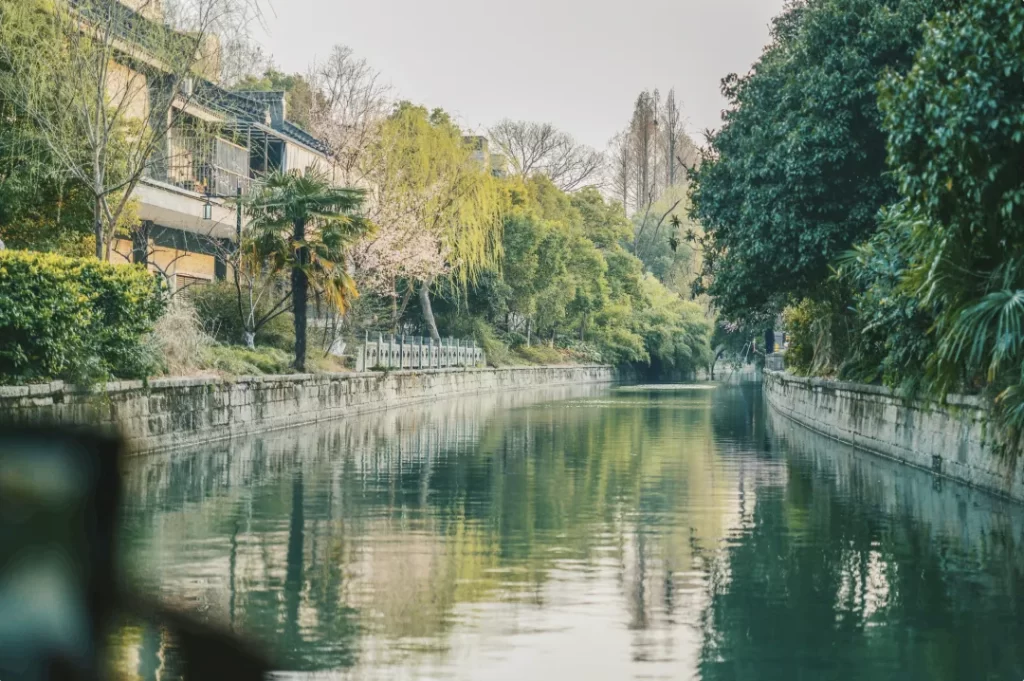
While the city is known for its well-connected subway system, there’s a hidden gem that’s both scenic and practical: the water bus. For just 3 RMB (about $0.50), you can hop aboard Hangzhou’s water bus system and glide through the city’s ancient waterways. Doesn’t that sound like the perfect way to explore a historic city?

Hangzhou was the first city in China to establish a water bus system back in 2004, and for over two decades, the fare hasn’t changed. While other cities promote tourist boat rides at steep prices, Hangzhou’s water bus stays true to its roots as a local commuter service—affordable and accessible. Whether you’re a first-time visitor or a seasoned traveler, the water bus offers a unique perspective of the city, taking you through areas steeped in history and local life.
The Routes: Exploring Hangzhou by Water
There are four main water bus routes in Hangzhou, each offering its own charm. Here’s a breakdown:
Route 7: The Scenic Gem

- Stops: Bazi Bridge, Guang’an Bridge, Chaoming Temple Alley, Caishi Bridge, Kui Lane, Zhejiang Second Hospital, Hangzhou Railway Station, Meihuabei
- Duration: 50 minutes
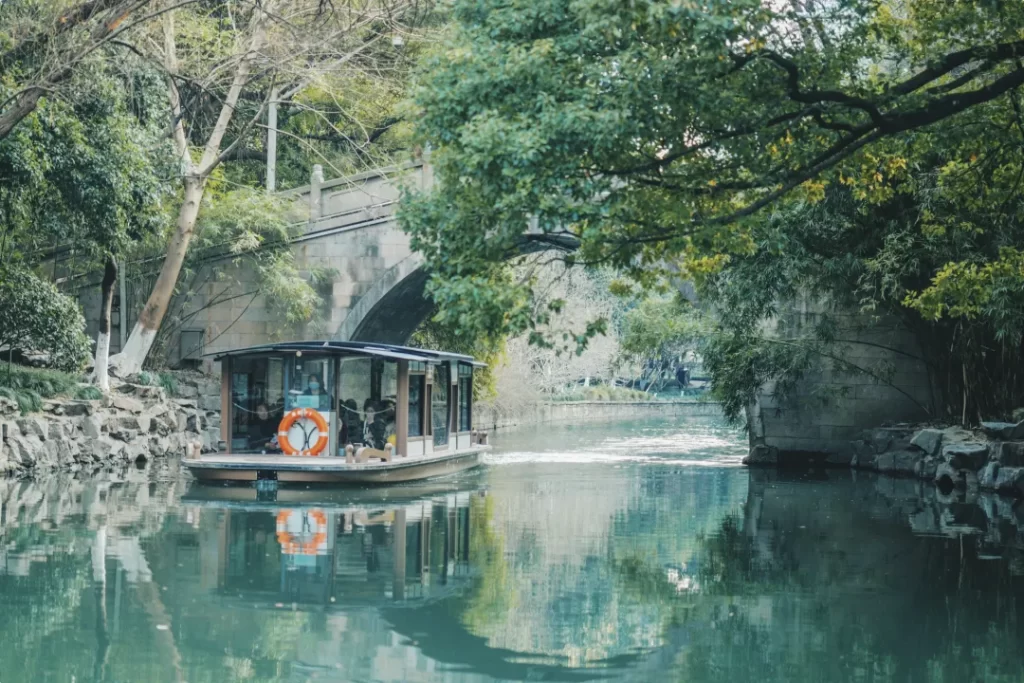
Route 7 takes you along the Donghe River, a lesser-known but historically significant waterway. Once used to transport fresh produce into the city, it’s also known as the “Vegetable Market River.” Along the way, you’ll pass through 19 ancient bridges, and the narrow sections of the river make for an intimate, picturesque experience.

What to do: Disembark at Meihuabei, the gateway to Hangzhou’s old southern neighborhoods. Here, you’ll find a blend of traditional alleyways, historic sites, and trendy cafés. Stroll through the Wuliuxiang Historical Street, visit the Southern Song Dynasty Deshou Palace Museum, and explore Dama Lane for local delicacies and souvenirs.
Route 1: A Journey Through the Grand Cana
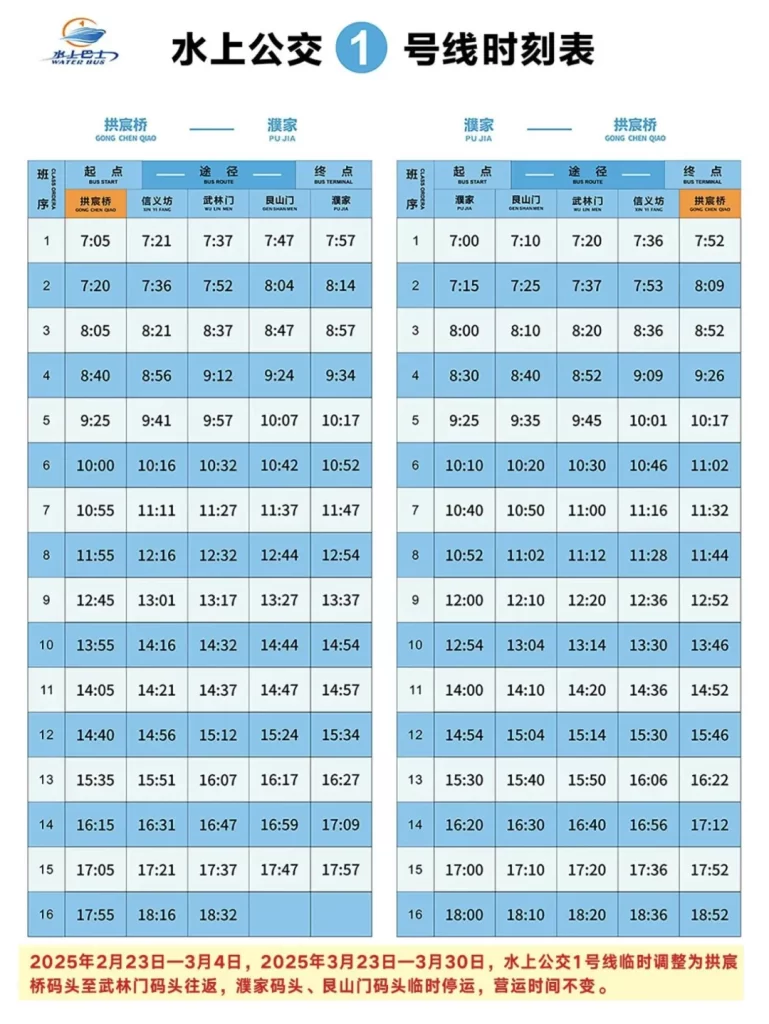
- Stops: Pujia Station, Hu Shanmen Station, Wulinmen Station, Xinyifang Station, Gongchen Bridge (near Bridge West Historic District), Yunhe Tiandi (near Xiaohe Street)
- Duration: 1 hour
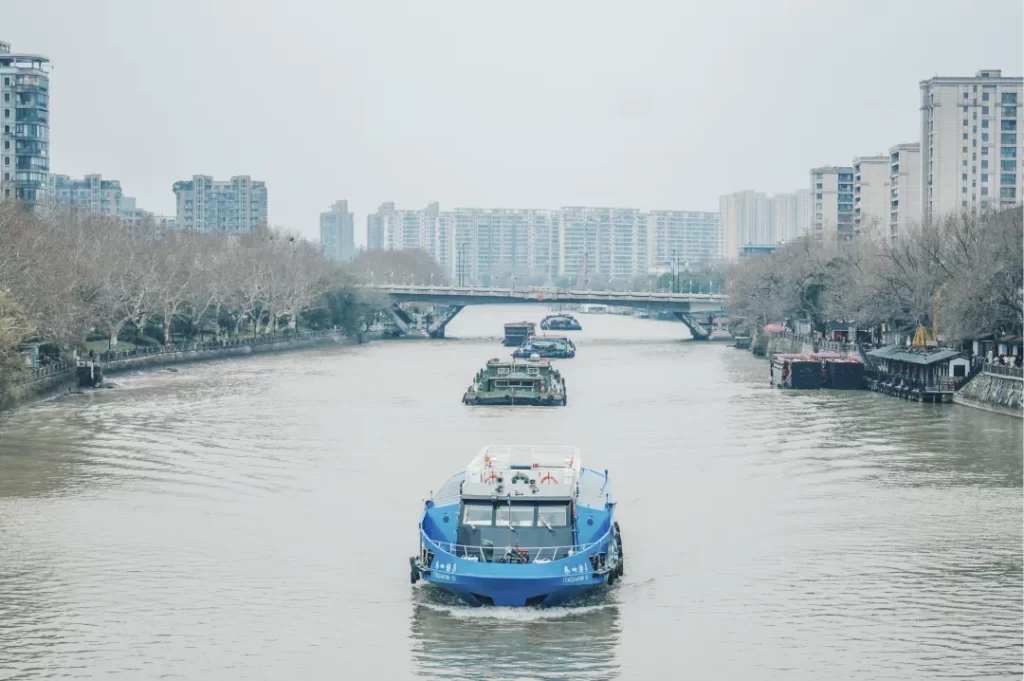
Route 1 runs along the Grand Canal, a UNESCO World Heritage Site. This is the most popular route, bustling with visitors even on weekdays. The larger boats can accommodate more passengers, making it a great option for groups.
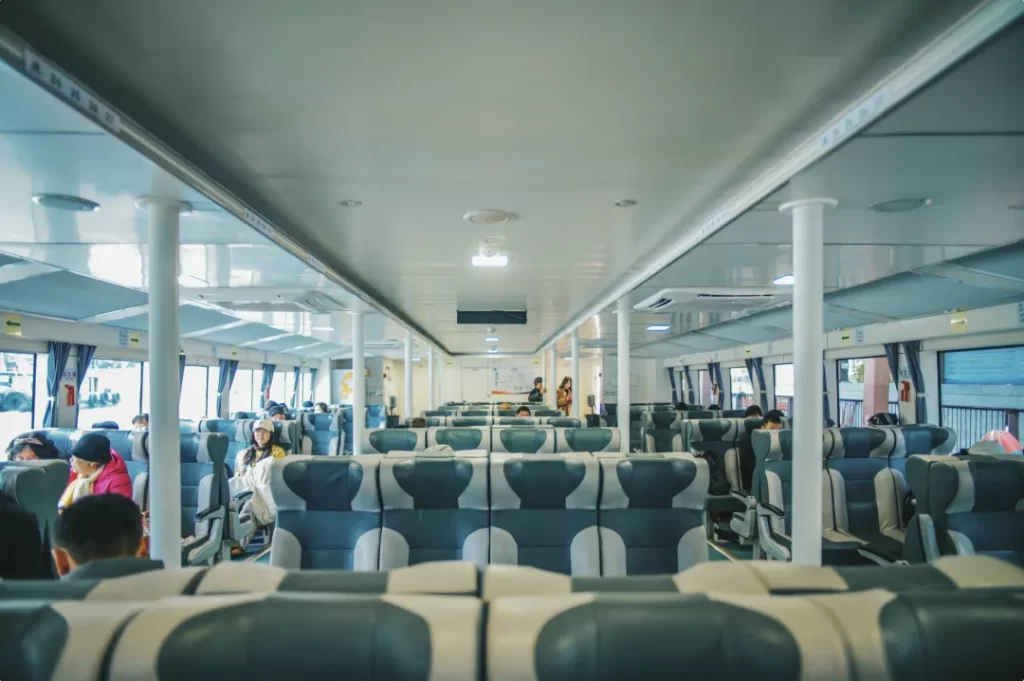
What to do: Start your journey at Wulinmen and head to Gongchen Bridge. Explore the nearby Bridge West Historic District, home to a cluster of fascinating museums, including the China Fan Museum, China Knife Scissors and Sword Museum, and the Hangzhou Arts & Crafts Museum. If you’d rather soak in the atmosphere, head to Xiaohe Street, where cafés and boutiques line the canal.
Route 2: For Nature Lovers

- Stops: Jiangcun (near Xixi Wetlands), Yangjia Bridge, Zhejiang University Zijingang Campus, Zijinghua Road Station, Gucun, Gucui, Hemu, Beixinguan, Xinyifang
- Duration: 50 minutes

Route 2 is ideal for those looking to escape the city’s hustle and immerse themselves in nature. The highlight? Xixi National Wetland Park. Known for its serene waterways and lush greenery, Xixi is the perfect spot for a peaceful boat ride. Opt for a traditional hand-rowed boat to fully embrace the slower pace of life.
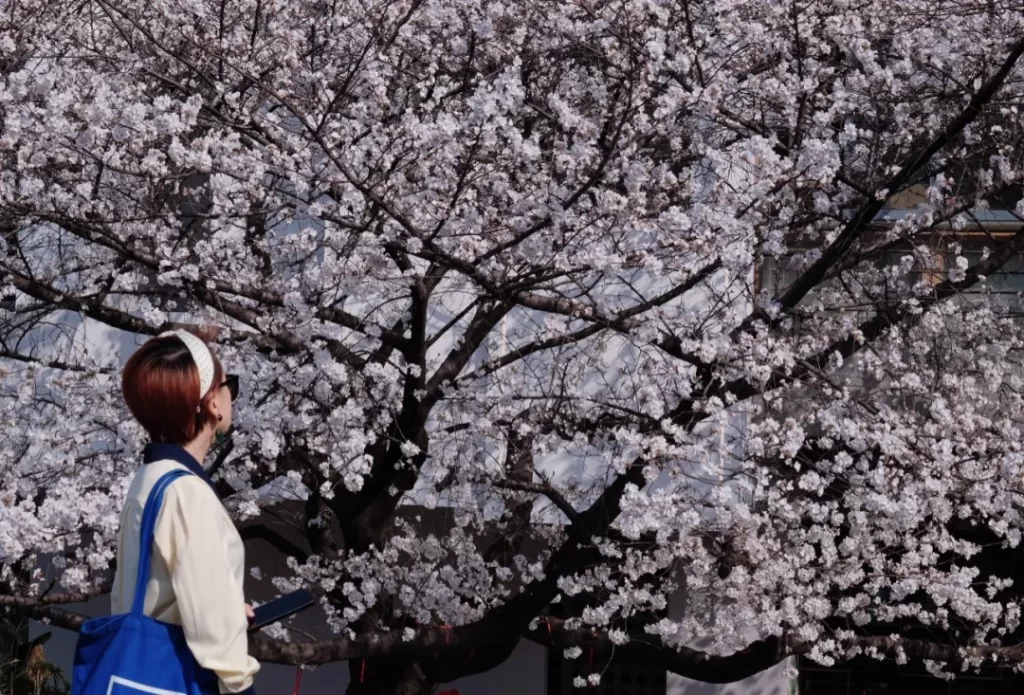
What to do: Start at Jiangcun Station and explore the Xixi Wetlands. If you visit in spring, you’ll be treated to vibrant cherry blossoms and fragrant flowers. Afterward, head to Xinyifang for a culinary adventure—this area is a hidden food haven loved by locals.
Route 3: Off the Beaten Path

- Stops: Datieguan, Chaohui, Gongda, Daguan, Chengbei Sports Park, Xiwen, Gaotingba, Huaxi Yongning Bridge, Hangbo, Beijingyuan, Banshan (near Banshan National Forest Park)
- Duration: 50 minutes
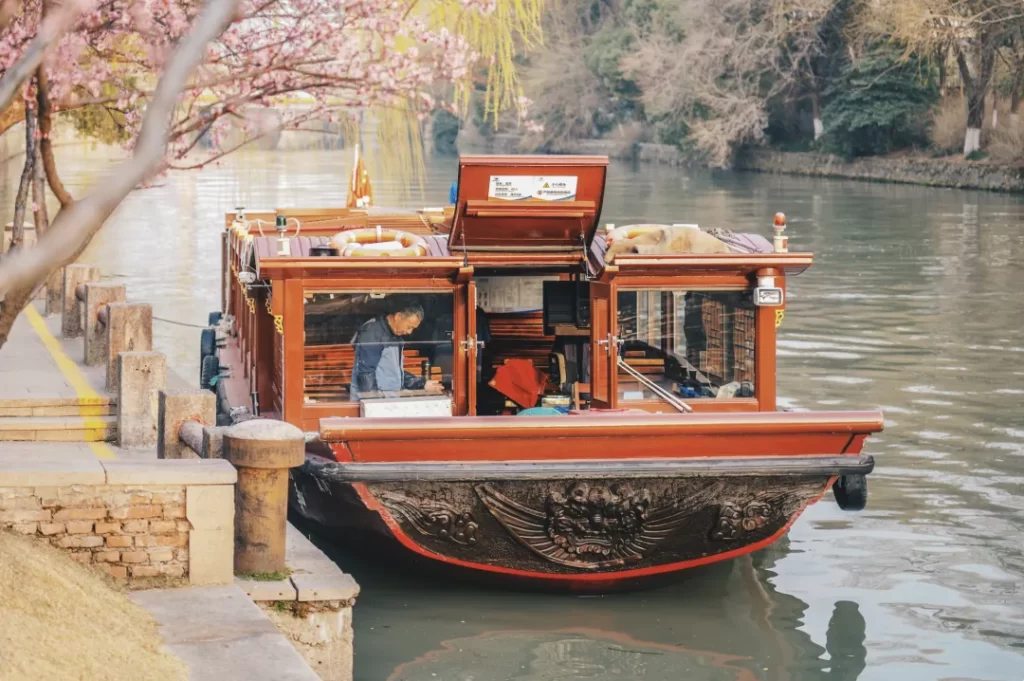
Route 3 offers a quieter, more laid-back experience, perfect for those who want to explore Hangzhou’s water culture without the crowds. The upper reaches of the Shangtang River, believed to have been constructed during the Qin Dynasty, are a testament to the city’s ancient engineering prowess.
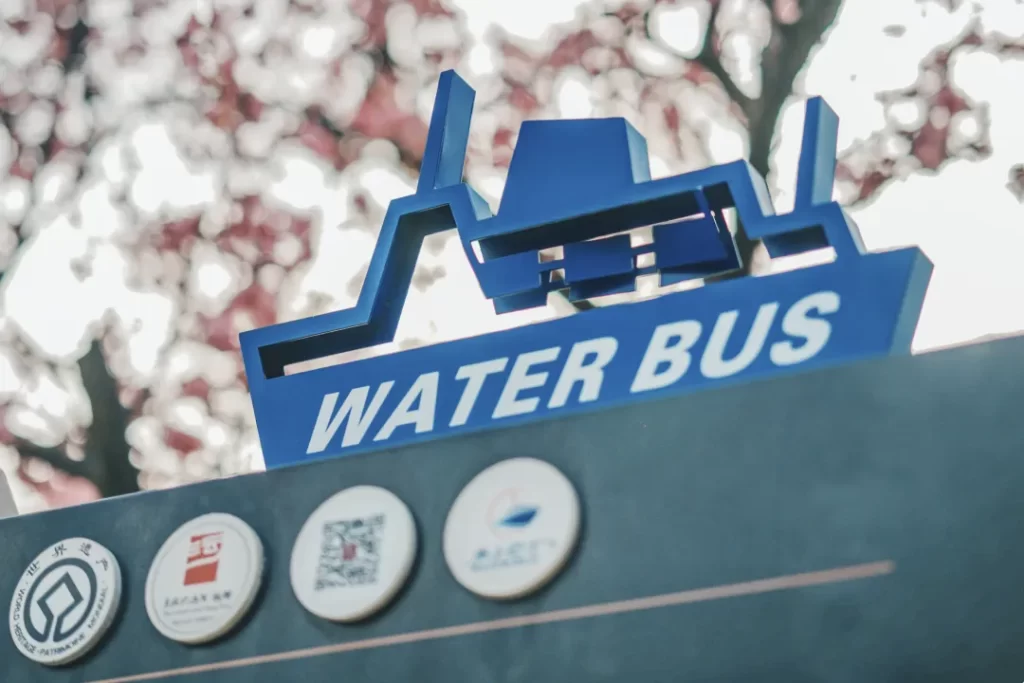
What to do: Disembark at Banshan Station to explore Banshan National Forest Park. With a forest coverage rate of over 90%, the park offers numerous hiking trails. For a panoramic view of the city, head to Wangcheng Pavilion at the summit.
Tips for Riding the Water Bus
- Payment: You can use a transportation card or Alipay—no need to book tickets in advance.
- Schedule: Check the water bus schedule on the official WeChat account “Hangzhou Water Bus” to avoid long waits.
- Best Time to Visit: Early mornings or late afternoons offer the most picturesque lighting for photos.
Why You Should Try the Water Bus
Unlike traditional sightseeing tours, the water bus lets you experience Hangzhou like a local. You’ll pass through vibrant neighborhoods, glide under centuries-old bridges, and see the city from a completely different angle—all for less than the price of a cup of coffee.
So, the next time you’re in Hangzhou, skip the standard tourist routes and hop on a water bus. It’s not just a ride—it’s a journey through time, culture, and the heart of the city.
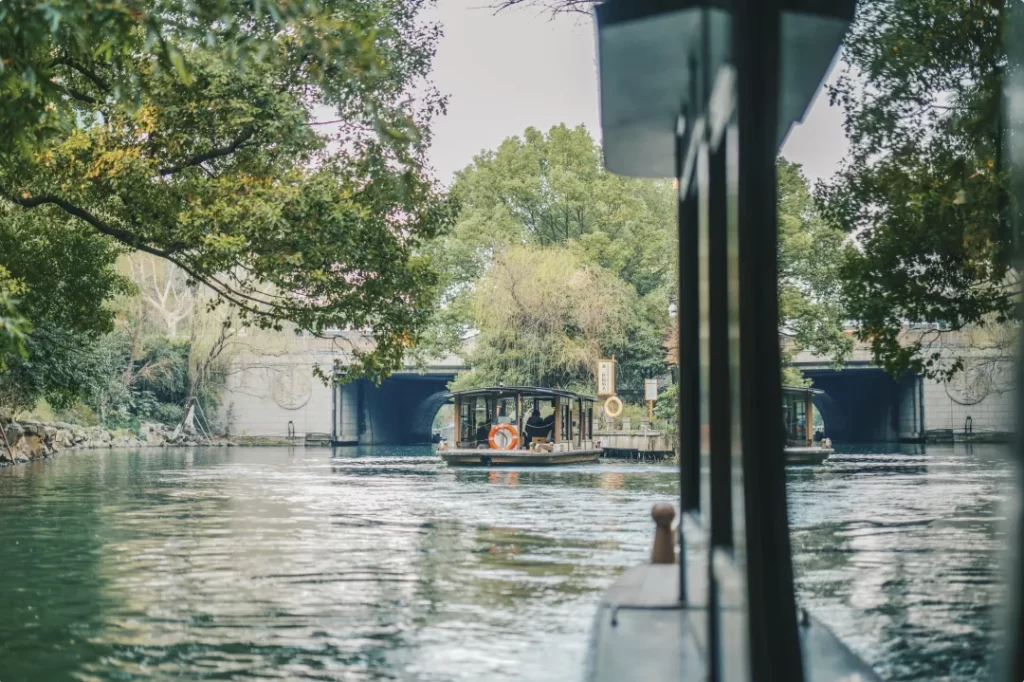
Hangzhou Awaits You
Hangzhou’s water buses offer more than just transportation—they’re a gateway to the city’s soul. Whether you’re a history buff, a foodie, or simply someone looking for a unique travel experience, Hangzhou’s canals have something for everyone
This spring, trade crowded landmarks for the gentle rhythm of the waterways. Who knew that for just $0.50, you could uncover an entire world of beauty and history?

